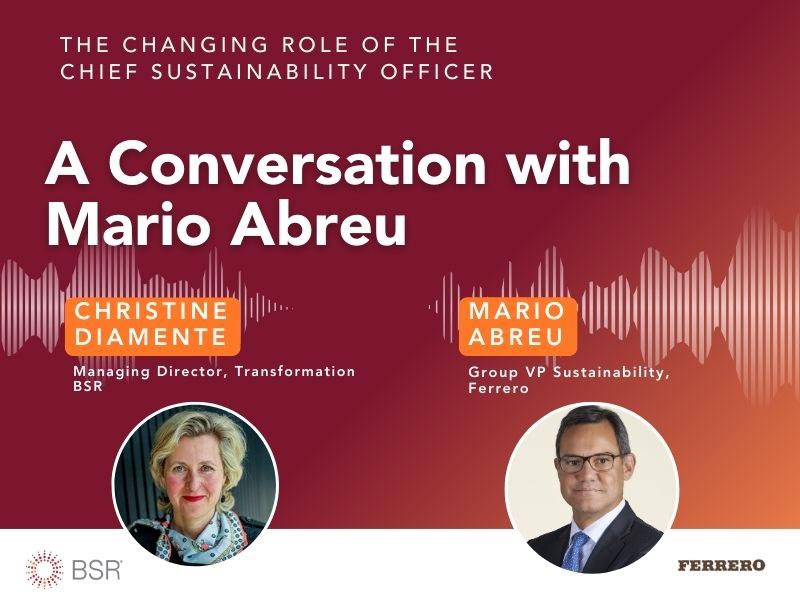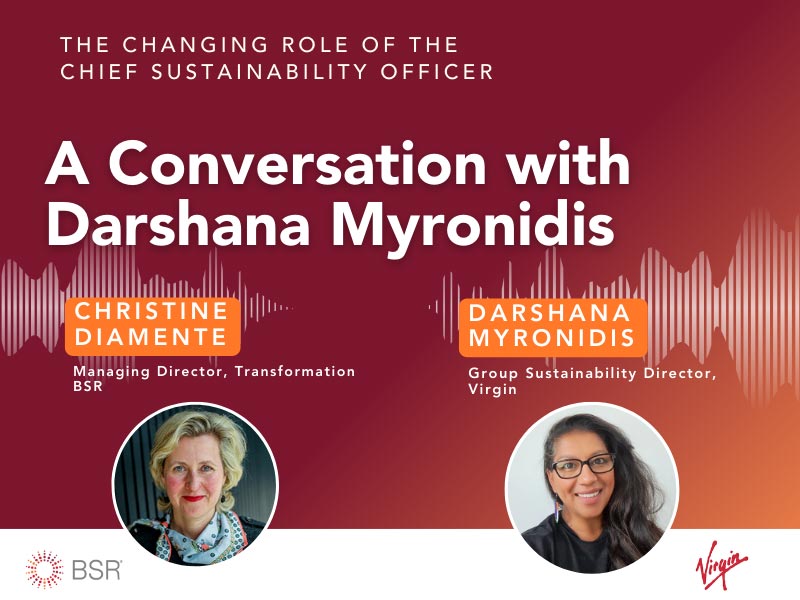
Stakeholder engagement is a cornerstone of BSR’s work, and our recent report looks at the future of stakeholder engagement, with input from eight companies that participated in our collaborative initiative dedicated to that subject.
Often, engaging with the right groups of stakeholders can mean the difference between a successful project with community support and a project with lengthy delays that threaten (or prevent) its existence. In the mining sector, stakeholder engagement is particularly relevant given the close proximity to and impact on local communities through the use of resources such as water, energy, and land.
In our work with extractives companies, executives often point to the importance of stakeholder engagement in developing comprehensive social risk management processes. Building relationships with community members can enhance trust and foster local support for a project.
While every company’s specific stakeholders depend on its operating circumstances, mining companies should consider the following groups when developing an engagement strategy. Within these groups, it’s important to include women, the elderly, and youth to access a range of perspectives.
Stakeholder Groups Extractives Companies Should Engage
- Employees, contractors, and business partners: Internal stakeholders and those stakeholders with a business relationship with the mine or company are often overlooked, but they are important to consider and interact with on a regular basis. Often, these groups are the primary contact point with community members, and many of them live in the community itself. When companies have a positive relationship with these groups, it not only improves direct relations with them; it can have a wider impact on the community’s perception of the company.
- Communities directly affected by mining operations: For communities to accept a mining project, they must perceive the project’s potential benefits as greater than its risks. Companies can support this by engaging community members, knowing and proactively addressing their concerns, and creating a shared vision of the community’s long-term future. For example, our work in Chile with Freeport-McMoran’s community relations team helped the organization shift from a philanthropic to a participatory approach that satisfied the needs of the company and the community.
- Advocacy organizations, including religious and environmental groups: It can be challenging to engage effectively with local and international groups that oppose a mining project. But by engaging with these organizations, companies can understand new perspectives, and can address concerns in a proactive way, even if neither party changes its position.
- Small-scale miners: Before large-scale mines arrived in many locations, these areas were used for generations by small-scale or artisanal miners. Artisanal miners are often displaced, losing access to the land that provides their livelihoods. The AngloGold Ashanti partnership with artisanal miners in Ghana is one example of a new way to approach collaboration with this stakeholder group.
- Food and agriculture industry and farmers: The mining industry can compete with agriculture when it comes to land use, access to water, and availability of workers. Mining operations can affect agriculture livelihoods, as well as food access and security. Many extractives companies have found ways to work with the agriculture industry to address issues like water shortages and quality, as is detailed in a recent report from the International Council on Mining and Minerals and the International Finance Corporation.
- Government: The government is an important stakeholder to engage as a regulator and the beneficiary of royalties. In many cases, the government is responsible for providing services in the community, and if the government is absent, stakeholders often look to the company to fill that role. While mining companies should not replace governments, it is important for the businesses to understand government priorities and plans, identify overlapping and shared interests, and determine clear roles and responsibilities in ongoing maintenance and funding of community investments.
- Indigenous people: In addition to individual universal human rights, indigenous peoples have special and collective rights to their land and its resources. Given these rights, as well as the unique impacts that mining projects can have on indigenous peoples, companies should take special consideration in relation to community engagement and consultation through free, prior, and informed consent (FPIC). (For more details on what FPIC can look like in practice, see the law firm Foley Hoag’s recommendations regarding engagement with indigenous peoples in the context of the U.S. Dakota Access Pipeline Project.) Developing an honest, transparent dialogue and understanding perspectives, cultures, and goals are important steps for meaningful engagement that can lead to positive outcomes, including agreements that help communities manage the impacts and receive the benefits associated with a mine.
Engaging effectively with these stakeholder groups can increase a company’s understanding of the likely impacts of its activities, ideally maximizing the benefits of investment while minimizing consequences.
To continue this conversion, join us at the BSR University session on the “Future of Stakeholder Engagement” in Huntington Beach, California, on Tuesday October 24.
Topics
Let’s talk about how BSR can help you to transform your business and achieve your sustainability goals.








